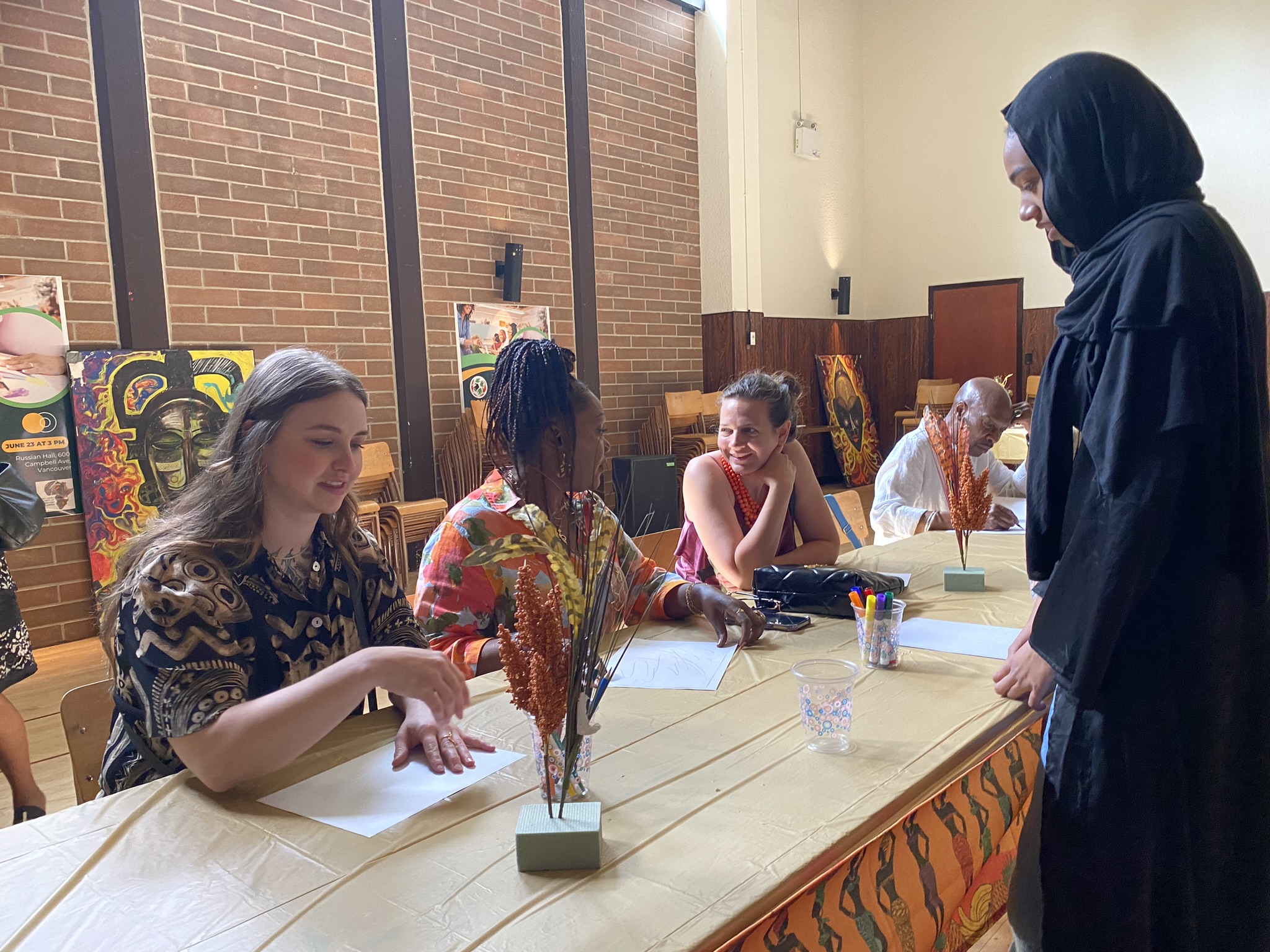SUPPLEMENT GRANTS FOR NAKHATANDI AND ARTS, CULTURE, TO EASE FEAR, LONILINESS AND MENTAL HEALTH CHALLENGES



























ELDERS SHARING THEIR LIVED EXPERIENCES THROUGH ART AND VISUAL THERAPY
Grants from BC Arts Council for Arts, Culture Resilience and Supplement Grants and the grants from the City of Vancouver, (Enabled Nakhatandi Project) at GLNS to cope with the impact of the COVID-19 crisis. The grants were put in the young people’s, and elders’ programs, which occupied and engaged them to share their imaginations, stories, and innovations expressed through drawing/painting, talent Search and training in Music, songs, drums, storytelling through painting and Drawing and Stage performances, sharing the experiences felt during COVID 19 that escalated Mental health. The participants of this program thought how they felt right there while painting and or drawing during the lockout, and isolation, which created different challenges including mental health. Most of the seniors were sad, angry, hurt, and fearful. Drawings/pictures expressed how each one felt, and how those paintings/drawings expressed their emotions.
At that moment we learned of how those Artists created art that conveyed to us how they thought and felt about things/life and especially how COVID had changed the earth. They used different lines, shapes, and colors to express their feelings. Every artist chose their own colors, lines and shapes that were meaningful for them. To us Art, at its root, is an expression and the artist is an expresser, translating in order to create meaning. Art expresses and translates, art acknowledges and reveals, art transfers and art intervenes. Art is an expression, an expression of feeling, belief, and character The program engaged students, during Spring Break for those who had no other activities/or families with no access to resources.
SENIORS & YOUNG ARTISTS AND COVID-19
11 years old
11 years old
9 years old
Why Measure Arts, Cultural Participation, Music and Stage performances. For and By Whom? What is Arts, cultural. Music and Stage performance participation? Who are the participants? Who should measure participation and who are the end-users of such data? These are overarching questions at the Great Lakes Society, recognizing both demographic and Audience demographics changes are rapidly changing, however, some arts and cultural institutions have been slow in recognizing changing interests and demands. Because of our interest in bridging and bonding diverse populations, we looks at areas of importance in interacting with the arts, rather than which artistic performances we attend. The Greater Vancouverites especially the underserved be hugely engaged in the arts, cultural, Music training and Stage activities, in a variety of ways, if there is funding. A new cultural paradigm has emerged in which participation, have broadly defined, and greatly expanded the range of activities that people engage in beyond attendance of traditionally defined cultural events occurring in traditionally recognized cultural settings.










Spring break – 2022 Children’s art/Music training and Stage performing program. The music industry has been hit hard by coronavirus. We have established professional arts training as an integral component being one of our overall activities. Venues/platforms accessibility for participants and audience is our key. Great Lakes Society is a model for Arts and cultural leadership that helps build and strengthen
Community Partnerships. Our programs aim to transform how arts and culture are integrated into every member of the community and how equitably reflect Great Lakes Society’s diversity. At GLNS we require data collection of the annual events internally, externally, within our local communities. A Quest for New Terms, Tools, and Techniques for Measuring Arts, Cultural Engagement.
